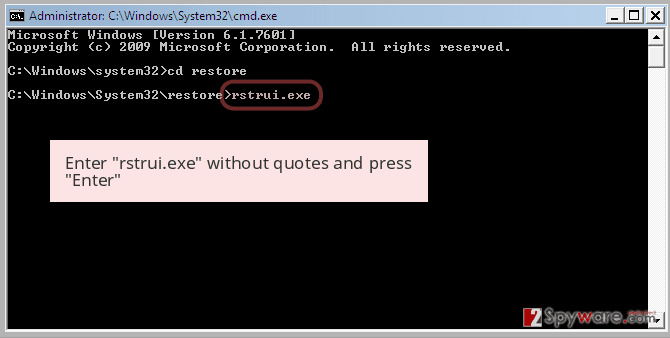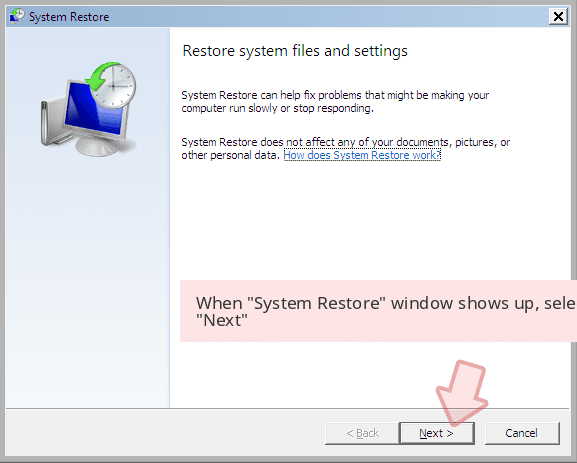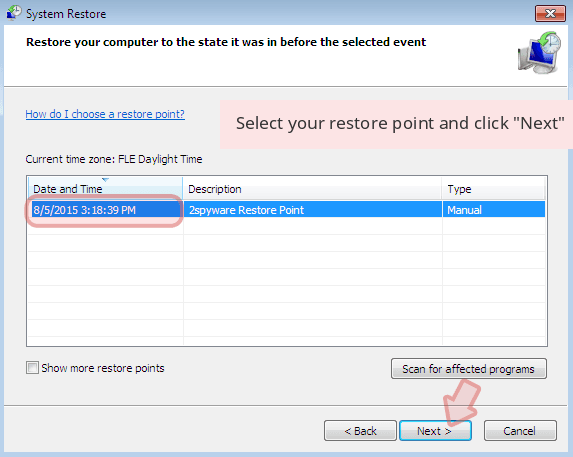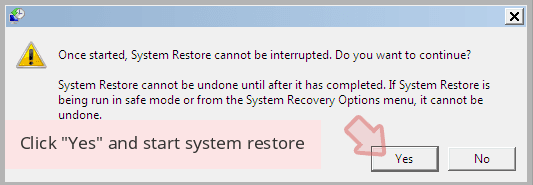DarkGate virus (Easy Removal Guide) - Free Instructions
DarkGate virus Removal Guide
What is DarkGate virus?
DarkGate – sophisticated malware campaign that mines crypto and locks up data
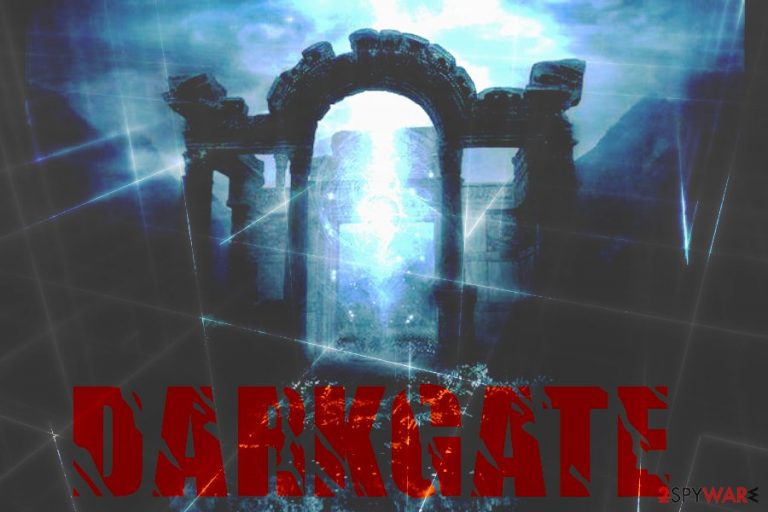
DarkGate virus is an elaborate cyberthreat that was spotted by enSilo's[1] Adi Zeligson making rounds in Spain and France. The malware targets Windows operating systems and is downloaded by users via torrent websites. The range of capabilities this malware posses is truly impressive – it can evade AV detection by using advanced obfuscation techniques, mine digital currency, steal crypto wallets, and allow the bad actors to take over the infected PC using remote control access. Finally, DarkGate is also able to lock personal files on the targeted machine by using ransomware capabilities. According to research, the virus is closely related to a password-stealer Golroted.[2]
| SUMMARY | |
| Name | DarkGate |
| Category | Malware |
| Type | Trojan/rootkit/ransomware |
| Infiltration | Torrent files, phishing emails |
| Complexity | High. Avoids detection, mines crypto, encrypts files |
| First discovered | November 2018 |
| Elimination | Use security software to get rid of the infection and then scan your machine with FortectIntego to fix the damage done by malware |
According to researchers, DarkGate malware spreads with the help of .torrent files, which are often associated with pirated software and media downloads. However, the technology itself is not illegal and can be used by businesses to share large amounts of data. DarkGate virus is known to be hidden on file-sharing torrent sites that offer free downloads of popular TV shows like Walking Dead or Game of Thrones. After execution, it runs VBScript[3] to infect the system.
Additionally, DarkGate can also be propagated in malicious spam campaigns that urge users to download and install fake executables or open PDF files. Regardless of the infiltration method, those who got infected should not wait and remove DarkGate virus from the machine which the help of reputable security software.
DarkGate then establishes reactive communication via the Command and Control server, which is carefully obfuscated by legitimate DNS records from AWS, Akamai CDN or Amazon, which prevents reputation-based detection.
DarkGate also performs a few checks in order to avoid detection. It first analyzes whether or not it landed in a sandbox environment (it is used by security experts to unpack and examine malware samples) and then scans for the most commonly used AV engines, such as Comodo, Trend Micro, Kaspersky, Bitdefender, Norton, Avast, etc.
DarkGate virus also uses two different techniques to bypass User Account Control (UAC) to gain administrator privileges on the targeted PC. Next, malware downloads additional malicious components, which execute the following:
- Allows hackers to gain a remote access;
- Steals crypto wallet credentials;
- Mines digital currency;
- Uploads ransomware payloads.
To conclude, DarkGate malware utilizes advanced technique to execute complex operations on the machine to bring the maximum benefit for its creators. As of now, the motive is believed to be monetary gain, although researchers do not deny other possibilities.
Because the virus uses sophisticated techniques to avoid detection, we recommend scanning your machine with multiple security tools for full DarkGate virus removal. After the elimination, use FortectIntego to recover from the damage malware caused on the system.
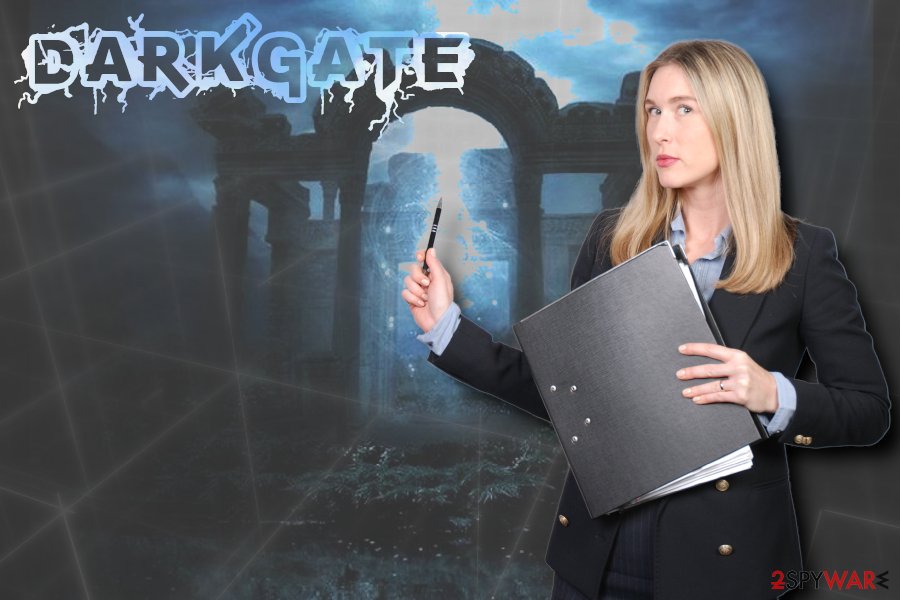
Beware of torrent sites and phishing emails
While the malware is exceptionally complex and advanced in its operation, the infection method used is relatively common for most virus families. As mentioned above, it mostly users .torrent file to run malicious VBScript to infect the machine, all while not being detectable by the user.
We highly advise users to stay away from file-sharing and torrent sites, as malware can be disguised as your favorite TV show or anything else for that matter. Additionally, pirated software and media is illegal, so might get you into real trouble. Nevertheless, many users are still undertaking such activity which makes malware's infection rate go up. Because the virus is still not detected by many AV vendors, infection is guaranteed once the malicious .torrent file is downloaded.
Another way to get infected with malware is by opening infected email attachments. Phishing emails have become one of the most prevalent virus distribution methods. Therefore, do not casually open attachments or click on links in an email from an unknown source, even if it looks legitimate.
Remove DarkGate from your computer
Experts believe that the malware will evolve and become even more sophisticated. As of now, DarkGate virus removal might be a little bit complicated, however. Only a few AV engines recognize the threat, as it uses advanced obfuscation techniques. Therefore, if you suspect that your computer is infected, you might have to try different AV engines. Researchers from enSilo claim that the software they offer detects the virus.[1]
Additionally, users might have to load their machines into Safe Mode with Networking in order to temporarily stop malware from functioning and then finally remove DarkGate virus. We provide instructions below, so check them out. Another way that might help you to eliminate the infection is System Restore function, which we also present below. Although this method is highly unlikely to help.
Getting rid of DarkGate virus. Follow these steps
Manual removal using Safe Mode
To remove DarkGate virus you will have to enter Safe Mode with Networking:
Important! →
Manual removal guide might be too complicated for regular computer users. It requires advanced IT knowledge to be performed correctly (if vital system files are removed or damaged, it might result in full Windows compromise), and it also might take hours to complete. Therefore, we highly advise using the automatic method provided above instead.
Step 1. Access Safe Mode with Networking
Manual malware removal should be best performed in the Safe Mode environment.
Windows 7 / Vista / XP
- Click Start > Shutdown > Restart > OK.
- When your computer becomes active, start pressing F8 button (if that does not work, try F2, F12, Del, etc. – it all depends on your motherboard model) multiple times until you see the Advanced Boot Options window.
- Select Safe Mode with Networking from the list.
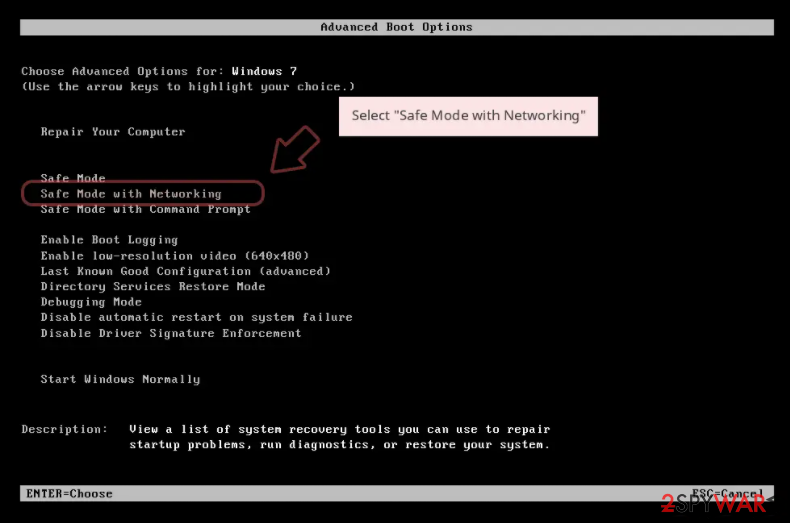
Windows 10 / Windows 8
- Right-click on Start button and select Settings.
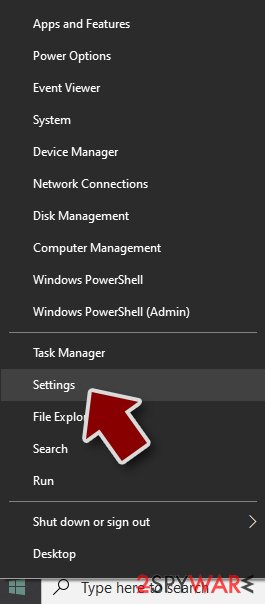
- Scroll down to pick Update & Security.
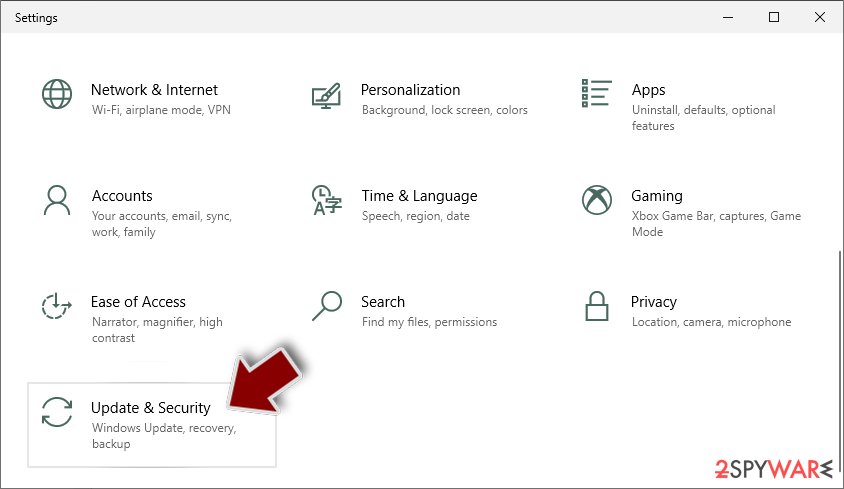
- On the left side of the window, pick Recovery.
- Now scroll down to find Advanced Startup section.
- Click Restart now.
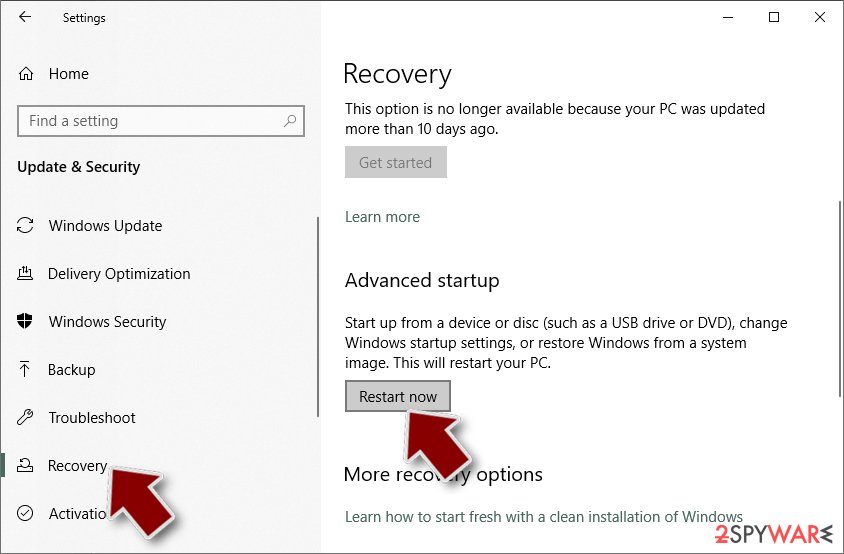
- Select Troubleshoot.
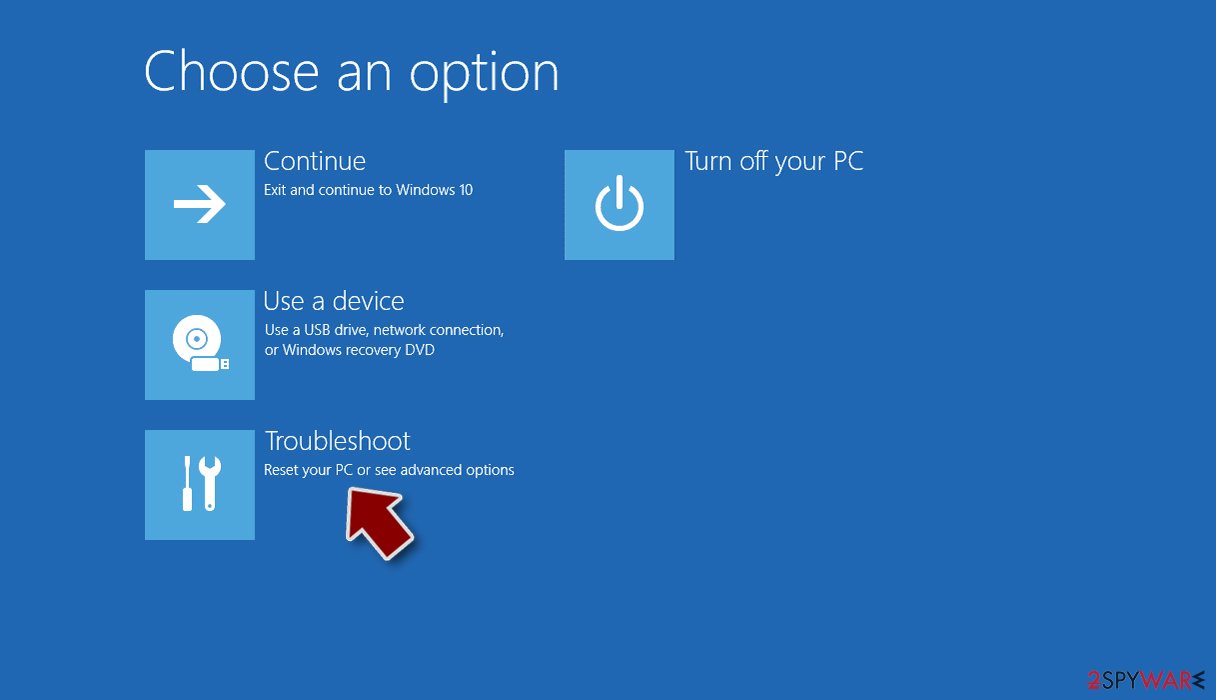
- Go to Advanced options.
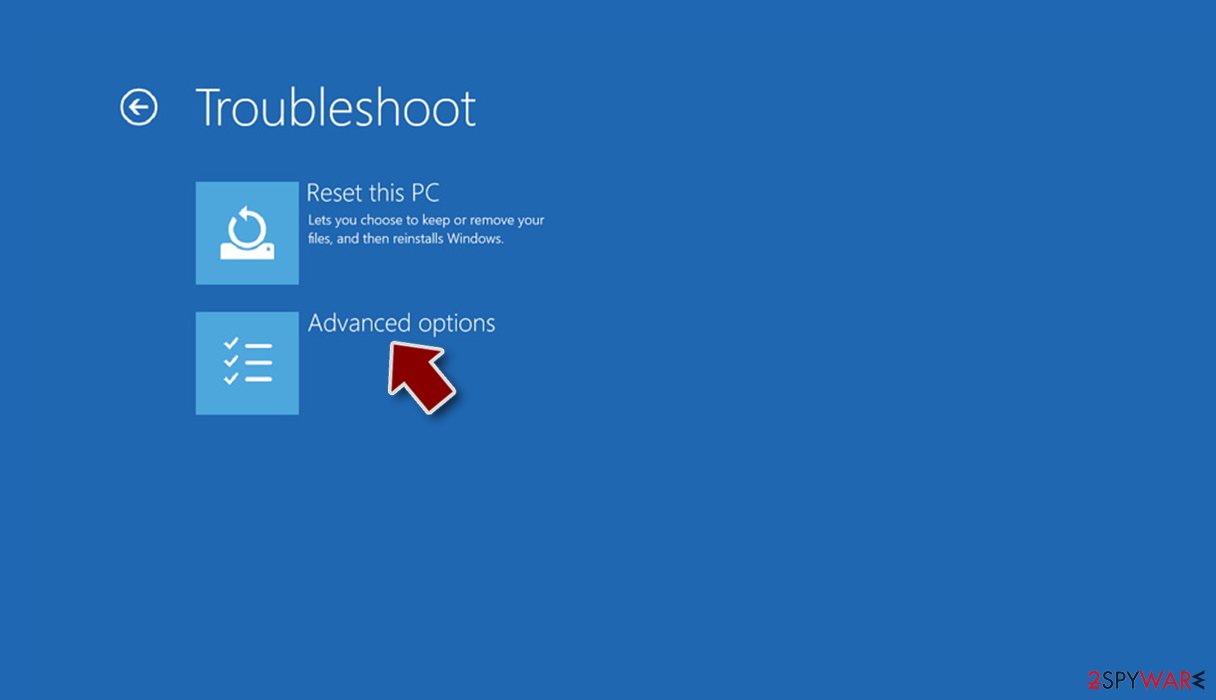
- Select Startup Settings.
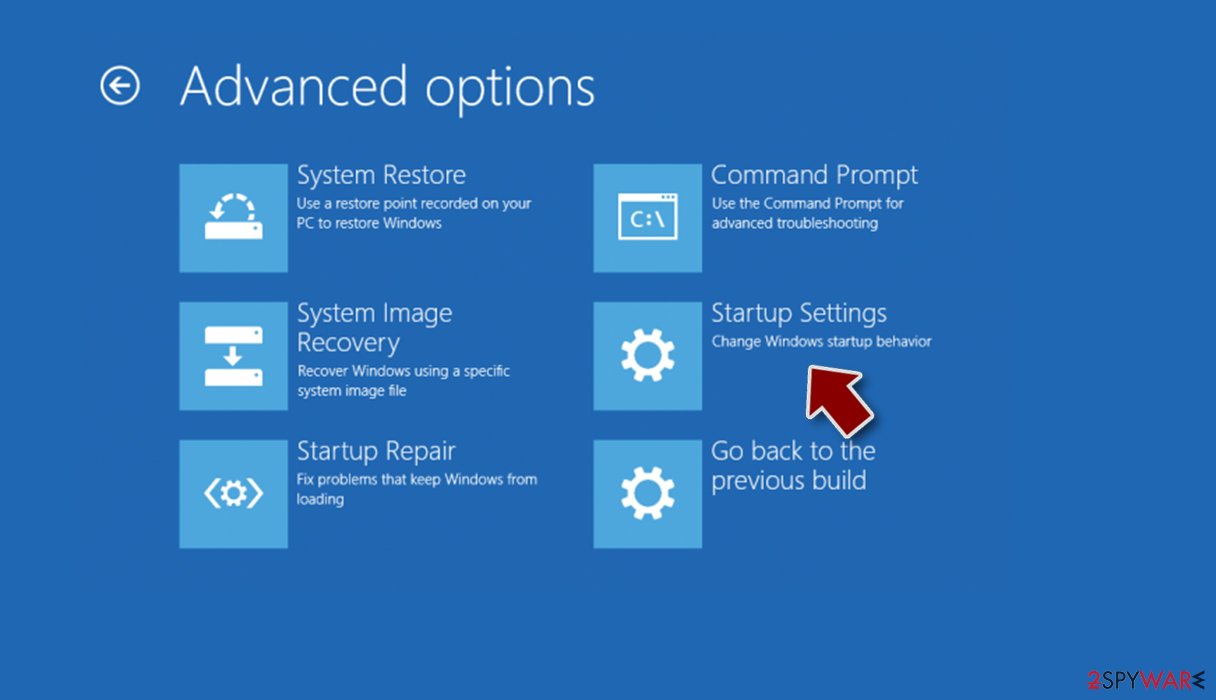
- Press Restart.
- Now press 5 or click 5) Enable Safe Mode with Networking.
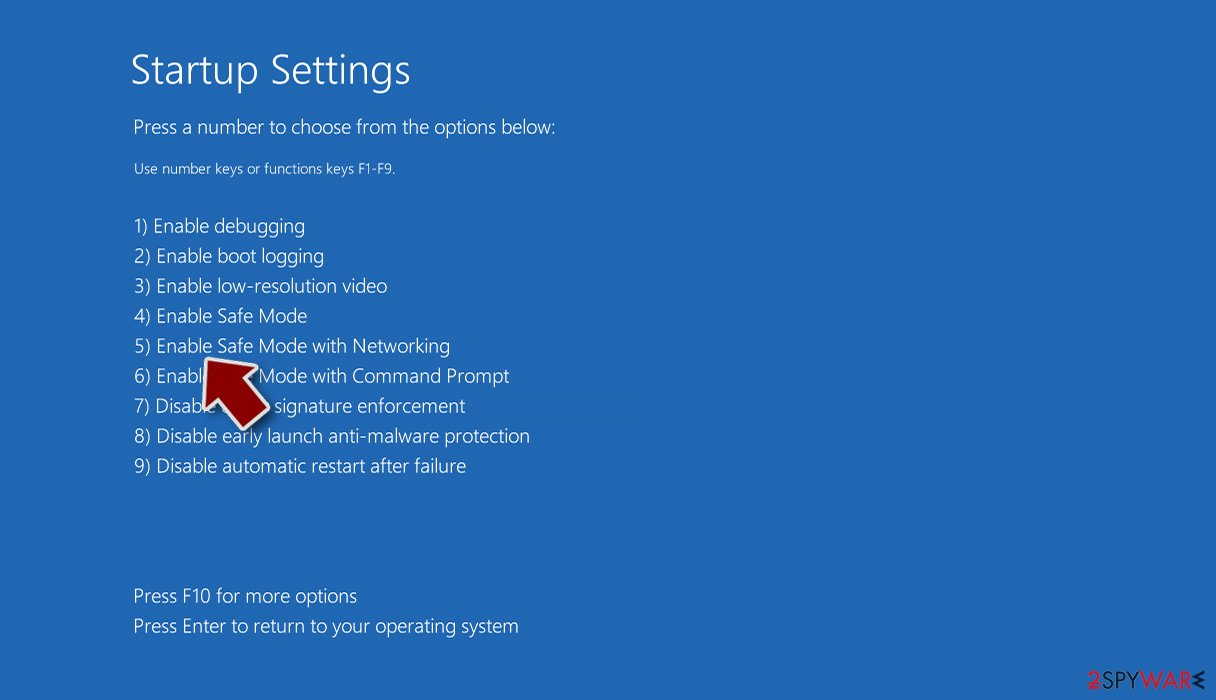
Step 2. Shut down suspicious processes
Windows Task Manager is a useful tool that shows all the processes running in the background. If malware is running a process, you need to shut it down:
- Press Ctrl + Shift + Esc on your keyboard to open Windows Task Manager.
- Click on More details.
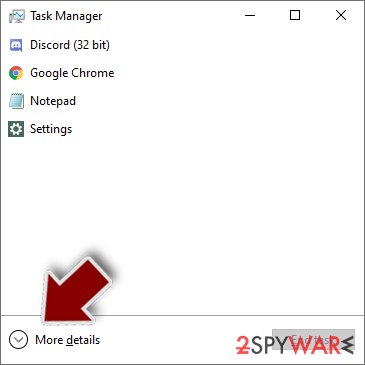
- Scroll down to Background processes section, and look for anything suspicious.
- Right-click and select Open file location.
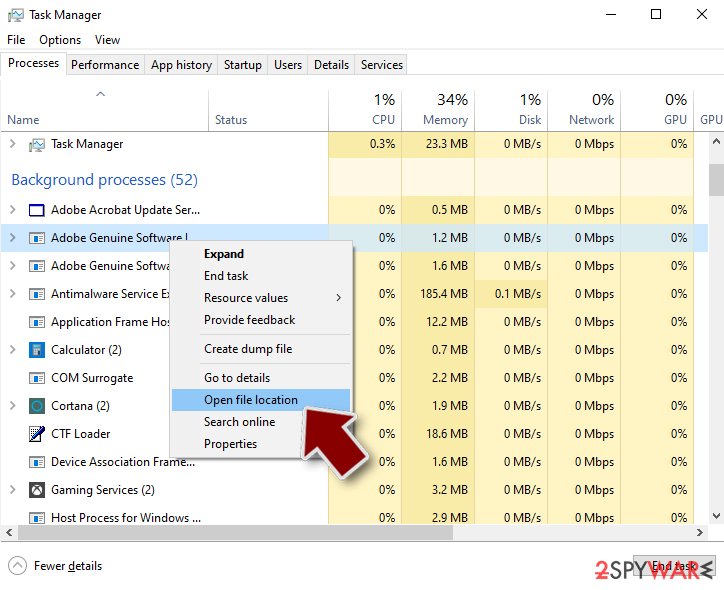
- Go back to the process, right-click and pick End Task.
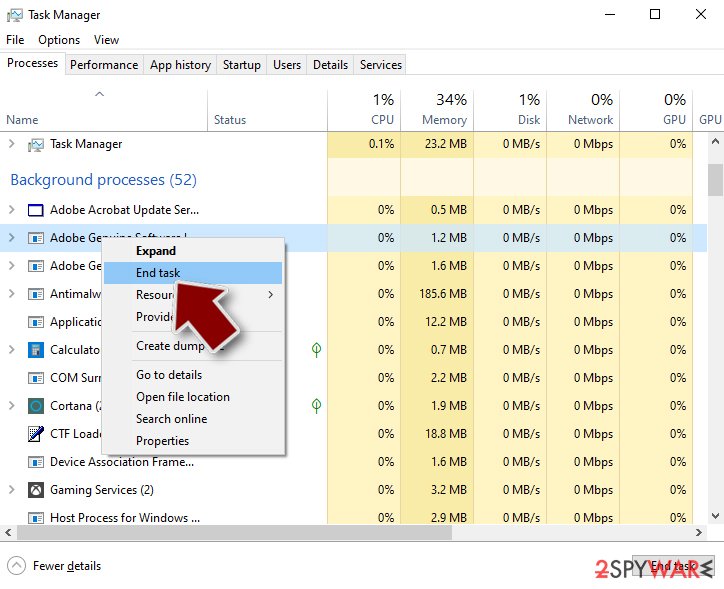
- Delete the contents of the malicious folder.
Step 3. Check program Startup
- Press Ctrl + Shift + Esc on your keyboard to open Windows Task Manager.
- Go to Startup tab.
- Right-click on the suspicious program and pick Disable.
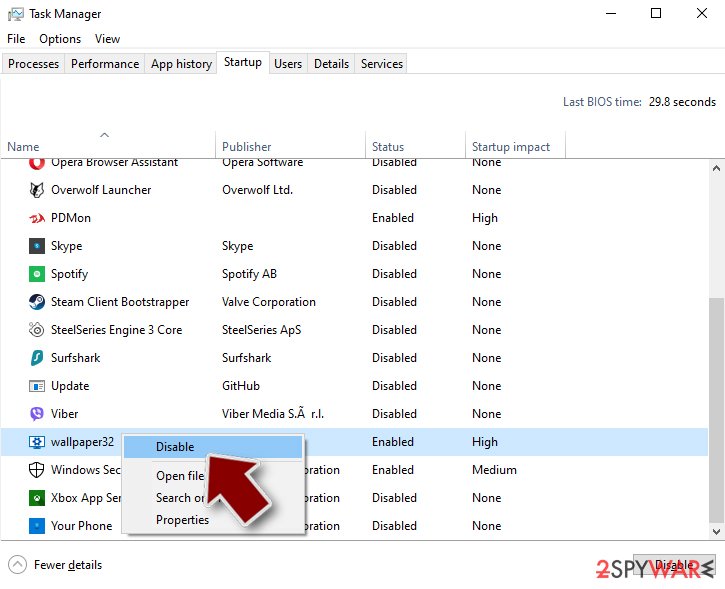
Step 4. Delete virus files
Malware-related files can be found in various places within your computer. Here are instructions that could help you find them:
- Type in Disk Cleanup in Windows search and press Enter.
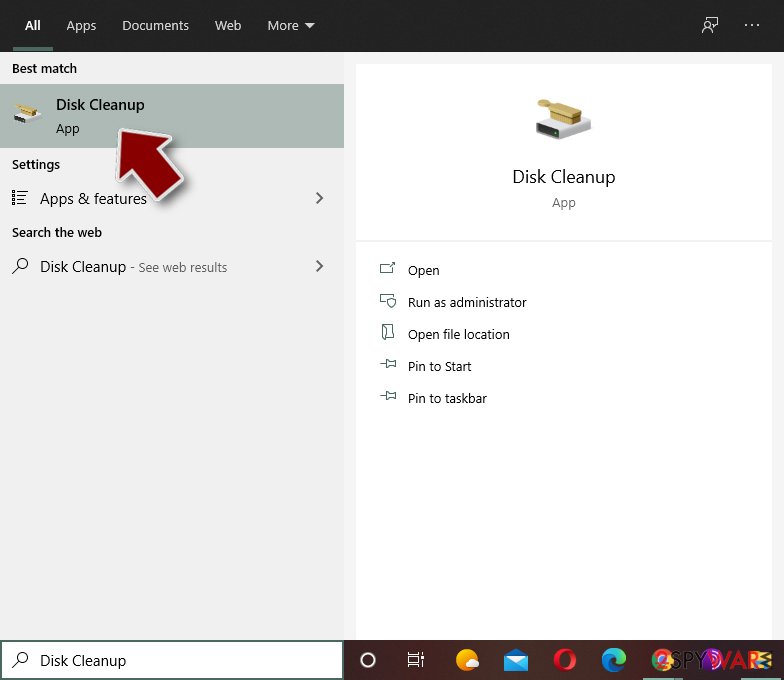
- Select the drive you want to clean (C: is your main drive by default and is likely to be the one that has malicious files in).
- Scroll through the Files to delete list and select the following:
Temporary Internet Files
Downloads
Recycle Bin
Temporary files - Pick Clean up system files.
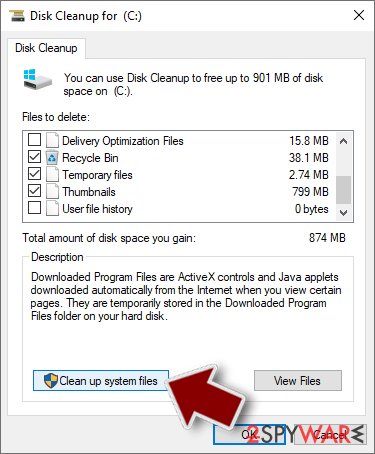
- You can also look for other malicious files hidden in the following folders (type these entries in Windows Search and press Enter):
%AppData%
%LocalAppData%
%ProgramData%
%WinDir%
After you are finished, reboot the PC in normal mode.
Remove DarkGate using System Restore
You can also utilize System Restore:
-
Step 1: Reboot your computer to Safe Mode with Command Prompt
Windows 7 / Vista / XP- Click Start → Shutdown → Restart → OK.
- When your computer becomes active, start pressing F8 multiple times until you see the Advanced Boot Options window.
-
Select Command Prompt from the list

Windows 10 / Windows 8- Press the Power button at the Windows login screen. Now press and hold Shift, which is on your keyboard, and click Restart..
- Now select Troubleshoot → Advanced options → Startup Settings and finally press Restart.
-
Once your computer becomes active, select Enable Safe Mode with Command Prompt in Startup Settings window.

-
Step 2: Restore your system files and settings
-
Once the Command Prompt window shows up, enter cd restore and click Enter.

-
Now type rstrui.exe and press Enter again..

-
When a new window shows up, click Next and select your restore point that is prior the infiltration of DarkGate. After doing that, click Next.


-
Now click Yes to start system restore.

-
Once the Command Prompt window shows up, enter cd restore and click Enter.
Finally, you should always think about the protection of crypto-ransomwares. In order to protect your computer from DarkGate and other ransomwares, use a reputable anti-spyware, such as FortectIntego, SpyHunter 5Combo Cleaner or Malwarebytes
How to prevent from getting malware
Do not let government spy on you
The government has many issues in regards to tracking users' data and spying on citizens, so you should take this into consideration and learn more about shady information gathering practices. Avoid any unwanted government tracking or spying by going totally anonymous on the internet.
You can choose a different location when you go online and access any material you want without particular content restrictions. You can easily enjoy internet connection without any risks of being hacked by using Private Internet Access VPN.
Control the information that can be accessed by government any other unwanted party and surf online without being spied on. Even if you are not involved in illegal activities or trust your selection of services, platforms, be suspicious for your own security and take precautionary measures by using the VPN service.
Backup files for the later use, in case of the malware attack
Computer users can suffer from data losses due to cyber infections or their own faulty doings. Ransomware can encrypt and hold files hostage, while unforeseen power cuts might cause a loss of important documents. If you have proper up-to-date backups, you can easily recover after such an incident and get back to work. It is also equally important to update backups on a regular basis so that the newest information remains intact – you can set this process to be performed automatically.
When you have the previous version of every important document or project you can avoid frustration and breakdowns. It comes in handy when malware strikes out of nowhere. Use Data Recovery Pro for the data restoration process.
- ^ Adi Zeligson and Rotem Kerner. Enter the DarkGate: new cryptocurrency mining and ransomware campaign. enSilo. Security solutions.
- ^ GOLROTED Targets Small and Medium-Sized Businesses. Tren Micro. Security research blog.
- ^ Visual Basic Script (VBScript). Technopedia. Site that explains technology.



